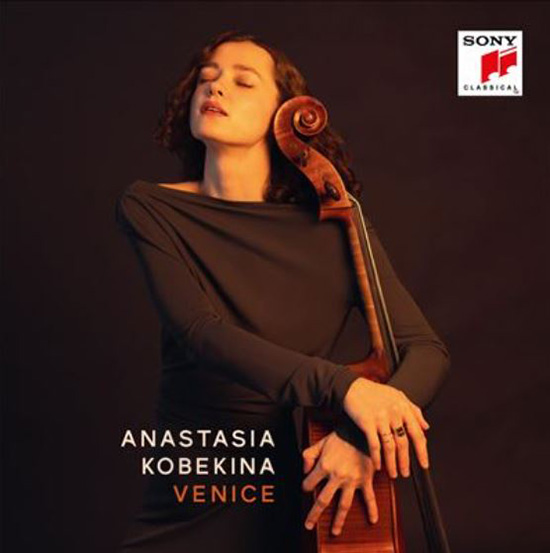
Anastasia Kobekina, Venice Review
Anastasia Kobekina, Venice Review
by Brice Boorman
 Anastasia Kobekina’s album Venice, released by Sony Classical on February 2, 2024, is a bold statement from an artist celebrated for her “fearless musicianship” and “almost overwhelming sincerity,” as acclaimed by The Strad and Le Figaro. This concept album explores Kobekina’s relationship with Venice, a city that, for centuries, has inspired countless artists with its mystique and beauty. Unlike the traditional depictions of Venice through gondoliers and carnival masks, Kobekina delves deeper, questioning the authenticity of these clichéd images and seeking a more personal and introspective connection with the city.
Anastasia Kobekina’s album Venice, released by Sony Classical on February 2, 2024, is a bold statement from an artist celebrated for her “fearless musicianship” and “almost overwhelming sincerity,” as acclaimed by The Strad and Le Figaro. This concept album explores Kobekina’s relationship with Venice, a city that, for centuries, has inspired countless artists with its mystique and beauty. Unlike the traditional depictions of Venice through gondoliers and carnival masks, Kobekina delves deeper, questioning the authenticity of these clichéd images and seeking a more personal and introspective connection with the city.
Kobekina’s choice of repertoire for Venice spans several centuries, from the Renaissance works of Claudio Monteverdi and John Dowland to contemporary pieces by Brian Eno and Caroline Shaw, illustrating a rich tapestry of musical history. The inclusion of compositions by Barbara Strozzi, Antonio Vivaldi, Gabriel Fauré, Nino Rota, and Benjamin Britten, among others, highlights Venice’s timeless influence on composers across eras. The album also features Kobekina’s rendition of “Ariadne’s Lament” by her father, Vladimir Kobekin, based on a melody by Monteverdi, emphasizing the album’s deeply personal nature.
The opening track, “Lamento d’Arianna” by Claudio Monteverdi, is a rewarding listen as Kobekina’s exceptional ability to convey vocal qualities through her cello brings life to the melody. Her mastery over intonation and bow control allows her to easily navigate the piece’s complexities, bringing forth a range of dynamics and articulations that color emotions into Monteverdi’s lament. Kobekina’s performance is a technical display that captures the essence of Ariadne’s grief and abandonment.
ability to convey vocal qualities through her cello brings life to the melody. Her mastery over intonation and bow control allows her to easily navigate the piece’s complexities, bringing forth a range of dynamics and articulations that color emotions into Monteverdi’s lament. Kobekina’s performance is a technical display that captures the essence of Ariadne’s grief and abandonment.
John Dowland’s “Go Crystal Tears” continues this exploration of emotion through music, with Kobekina delivering a nuanced performance with her use of phrasing and vibrato, in particular, showcases her ability to balance expressiveness and control, drawing listeners into the song’s melancholic mood and the emotional state of its lyrics.
Antonio Vivaldi’s “II. Largo” from the Cello Concerto in E-Flat Major, RV 408, is another highlight, where Kobekina’s interpretation stands out for its lyrical and introspective qualities. Her dialogue with the orchestra is balanced and engaging, making this rendition of the “Largo” a memorable one that surely ranks among the top performances of this movement.
Through Venice, Anastasia Kobekina offers listeners a unique auditory journey into the heart of Venice. Her collaborations with guest artists and the Basel Chamber Orchestra add richness to the album. Kobekina’s virtuosity and vision of Venice as not just a physical location but as an “idea, a character” is realized through her curation of music that spans centuries yet feels intimately connected.
 In conclusion, Venice is an album that invites listeners to engage with its music and history. For anyone interested in the cello, classical music, or the enigmatic charm of Venice, Venice is an essential listening experience that offers a fresh perspective on the city and its cultural legacy.
In conclusion, Venice is an album that invites listeners to engage with its music and history. For anyone interested in the cello, classical music, or the enigmatic charm of Venice, Venice is an essential listening experience that offers a fresh perspective on the city and its cultural legacy.
Anastasia Kobekina
Venice
Sony Classical
February 2, 2024